Reducing by half the time spent on data collection
Dolce La Hulpe x Tapio
Reading time: 5-6 minutes
Reading time: 5-6 minutes

Carbon management in the hospitality industry comes with challenges. One of the main challenges for Dolce La Hulpe, a Belgian hotel hosting more than 70,000 visitors per year, was managing a wide range of data.
Dolce La Hulpe decided to tackle this challenge. Working with Colin Royer, a Tapio Carbon Expert, and our carbon management software, Dolce La Hulpe conducted a carbon report for two consecutive years with Tapio’s software and developed a strategy to reduce its carbon footprint.
We prepared the 2022 carbon report from September to December 2023, while the 2023 carbon report was compiled between January and February 2024. The first carbon report took, on average, 30 hours, while the second took 15 hours. Read further to discover how the second carbon report took 50% less time than the first.
Before starting the carbon report project, Dolce La Hulpe had already taken several steps to reduce its environmental impact and promoted nature-friendly recreational and team-building activities, among many other actions.
But they needed more.
Tapio has helped them go even further by providing:
These reasons led Dolce La Hulpe to work with Tapio for a comprehensive carbon report and strategy. Thanks to our two-year collaboration, we were able to:
The platform was key in reducing the time spent on this task.
Our expert had already set up his work when starting the second carbon report. To start data collection, he only had to duplicate the previous carbon report, excluding the past year’s data but maintaining the same assumptions and data collection templates created for the first report.
Additionally, when encoding data, the platform allows importing a CSV template file to handle large volumes of data, which was particularly useful for managing data from Dolce’s 13 main suppliers (representing 80% of the expenses).
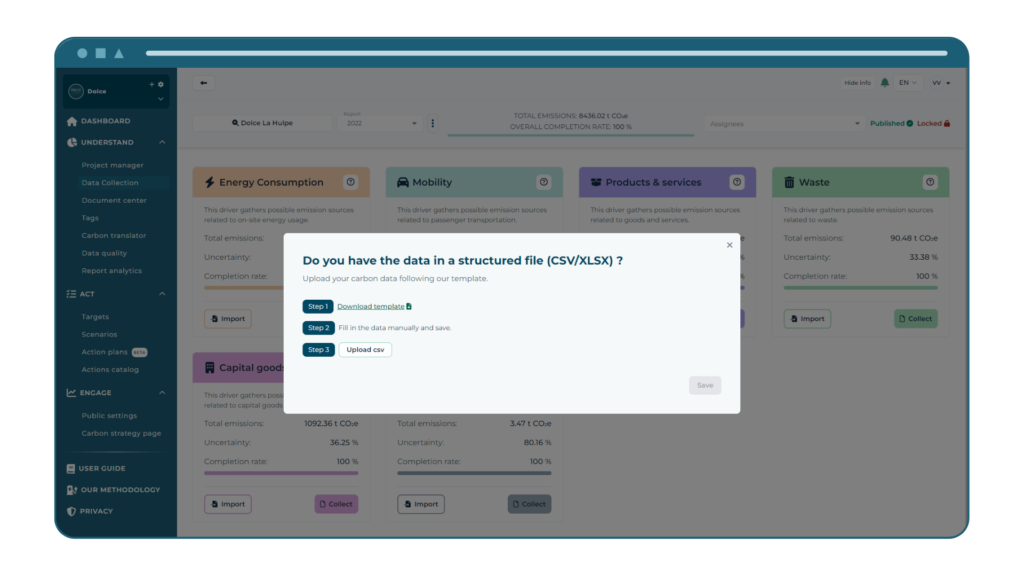
The software is impactful for the expert who optimised the process and for Dolce. Saving time mapping Dolce’s data flows allowed us to dedicate more time to improving data accuracy and creating a carbon reduction strategy.
The interactive aspect of the platform cannot be overlooked in the mission’s success. Wendy Steeno, Purchasing Manager at Dolce La Hulpe Brussels, told us, “Other than the practical aspects, Tapio has the advantage of motivating us to proceed with the mission thanks to its user-friendly data collection tools that allow us to track our progress effectively.”
In the first carbon report, the time constraints and large data flow from third-party suppliers obliged our expert to rely more on monetary activity data. However, for the second report, our focus shifted to obtaining more precise emission factors and gathering physical data instead of monetary data. As a result:
The automatically generated data quality graph below shows that no data with a high relative impact is of low quality.
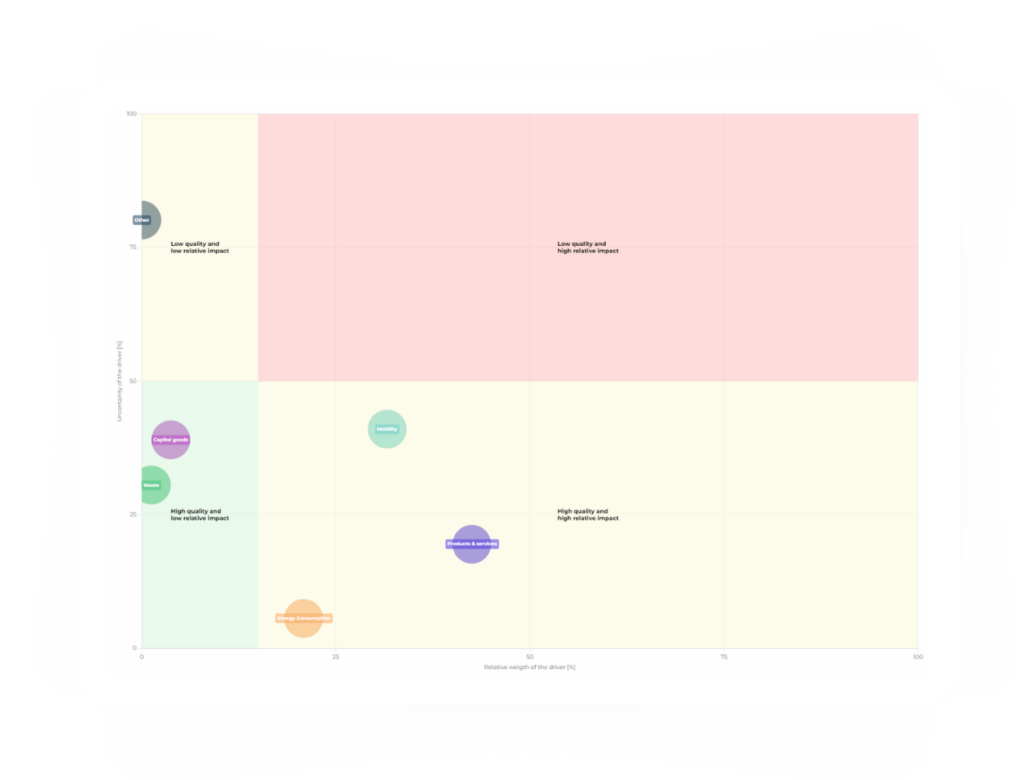
Because data collection was less time-consuming, we could focus more on the carbon reduction strategy in 2024.
When arriving at this step, the Tapio platform allows you to:
The first step to creating a reduction strategy is setting reduction targets. You can do that on the Tapio platform in seconds. You only need to:
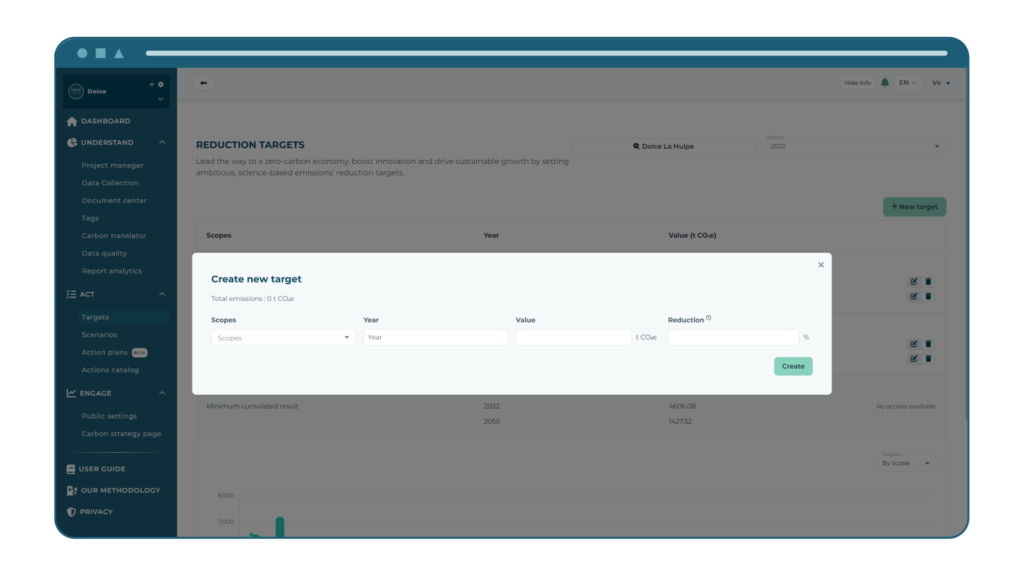
Once the data is encoded, you can visualise the reduction targets through an automatically generated and exportable graph.
The graph below shows that the scope 3 emissions in 2023 are above targets, while the targets for scope 1 and 2 are well below. This is due to more accurate data collection with suppliers during the second carbon report and increased visitor numbers and mobility by plane.
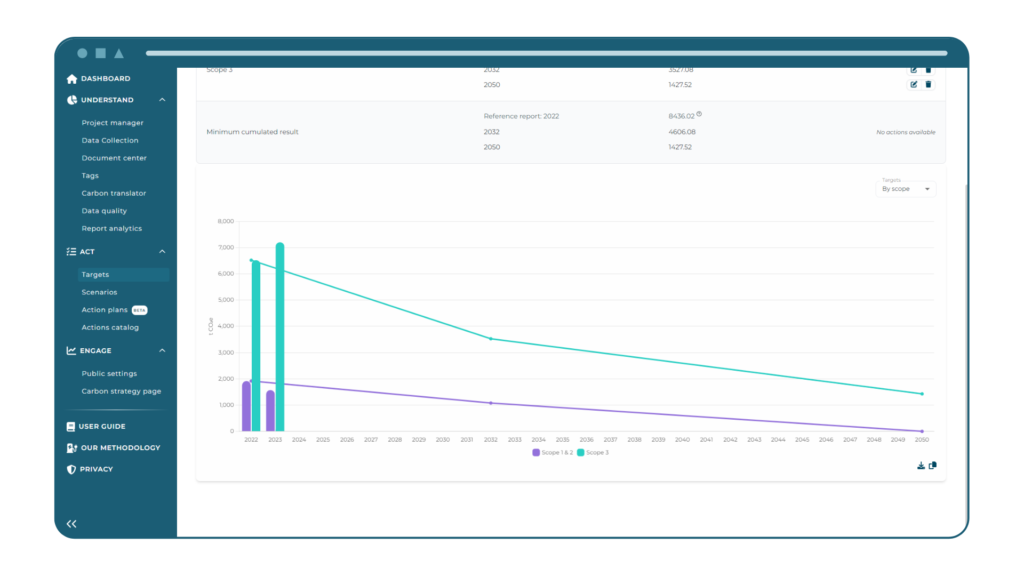
Once you’ve set targets, it’s time to create a reduction scenario and associate an action plan with it. To do so, you can choose an action from our catalogue, as you can see below, or create a customised one.
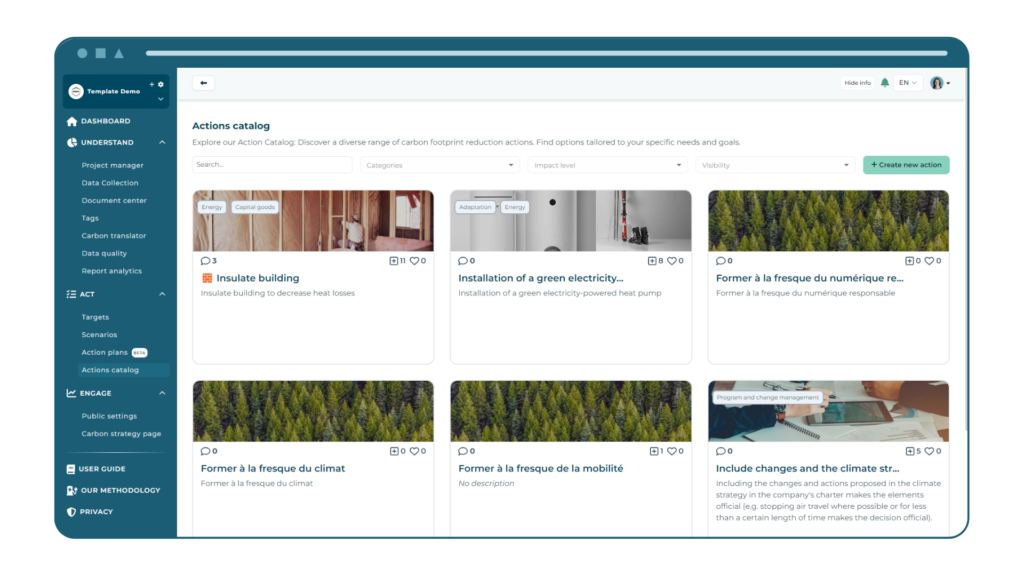
When creating an action, the platform allows for detailed information to be included, such as:
These detailed elements make it possible to manage and track the progress of each action effectively. Once the action plan is finalised, you can check if the expected reduction corresponds to the targets you’ve set beforehand.
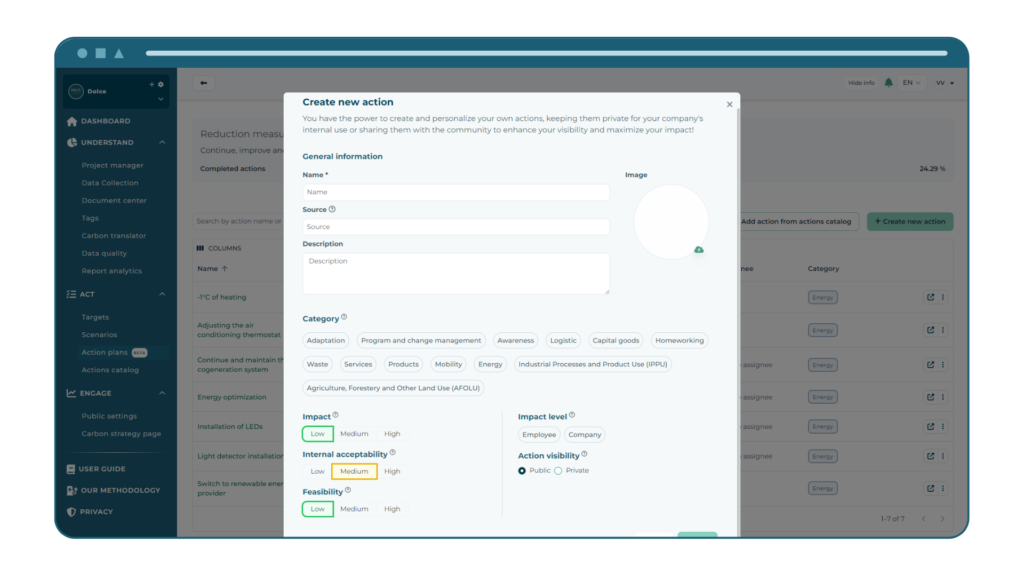
As for Dolce, they decided to focus on the following elements, as you can see on their public Carbon Strategy Page (CSP):
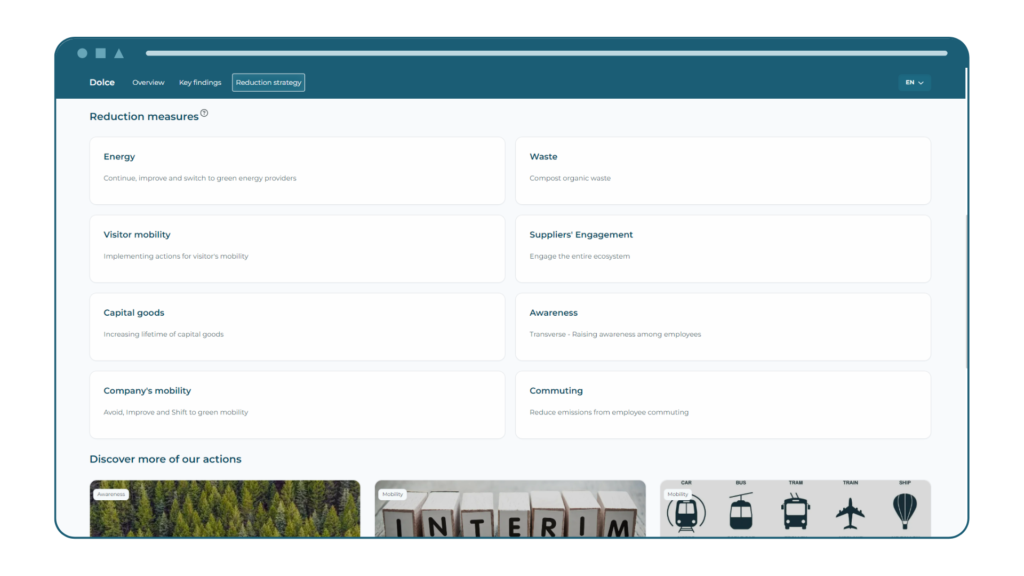
The main challenges on this front for Dolce will be:
Anne Clinckspoor, Marketing Director at Dolce La Hulpe, states, “One of the biggest challenges for hotels is balancing customer satisfaction, which is the foundation of our business, with a commitment to environmental action. Inspiring our guests to be environmentally responsible without forcing them to do so is the approach we want to take to ensure they have the best possible experience. Not all our guests have the same sensitivity in this regard, and we prefer to encourage them to choose a vegetarian dish or an activity that connects them to nature rather than impose it.”
After implementing a carbon strategy, a critical step is communicating it to build trust with key stakeholders such as customers, investors, employees, and suppliers. This also allows for easier change management among employees, which is one of the biggest challenges that companies face when integrating sustainability into their culture.
Dolce La Hulpe decided to add its CSP, Tapio’s automatically generated webpage, to its website to communicate the results of its efforts efficiently and transparently. The revamped version of the CSP allows you to:
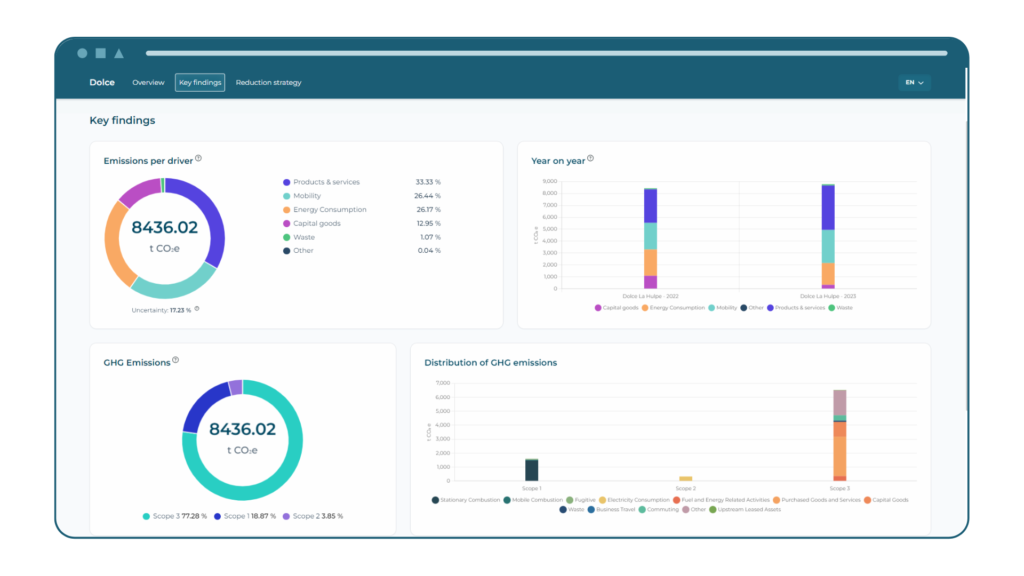
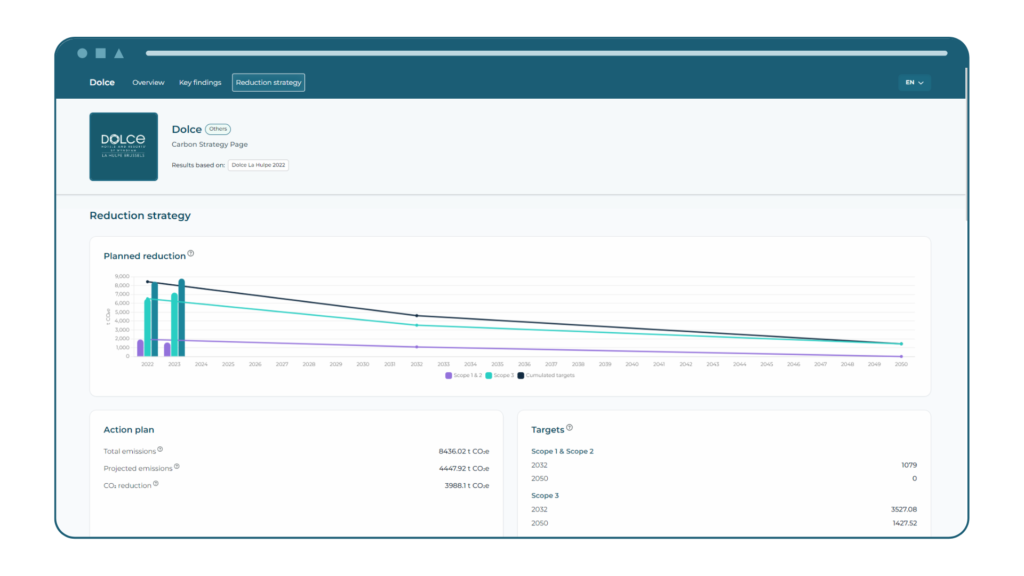

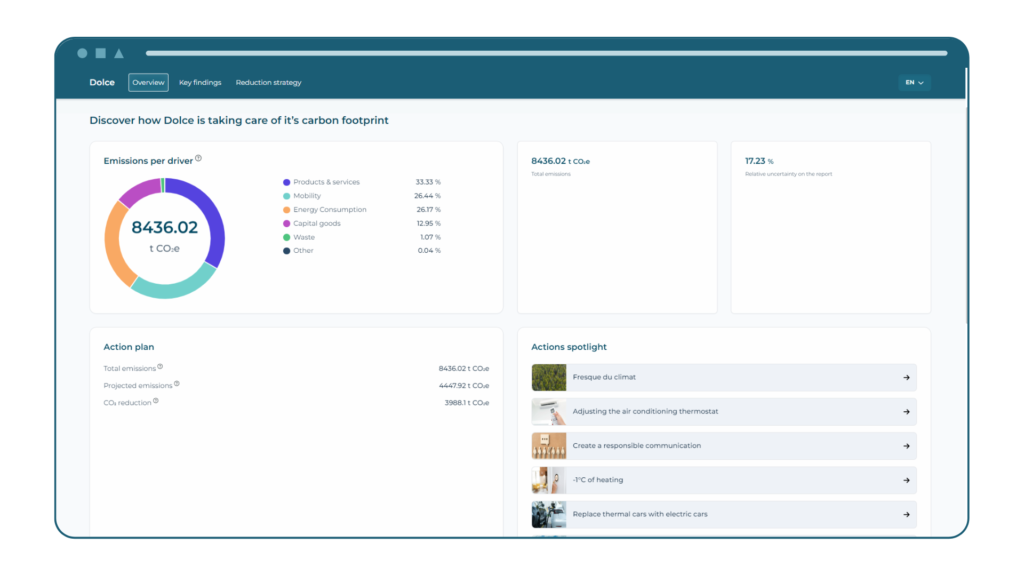
In the coming years, Dolce La Hulpe will tackle the following challenges:
Their climate strategy is part of a more extensive CSR strategy that has been part of Dolce’s DNA since the beginning.